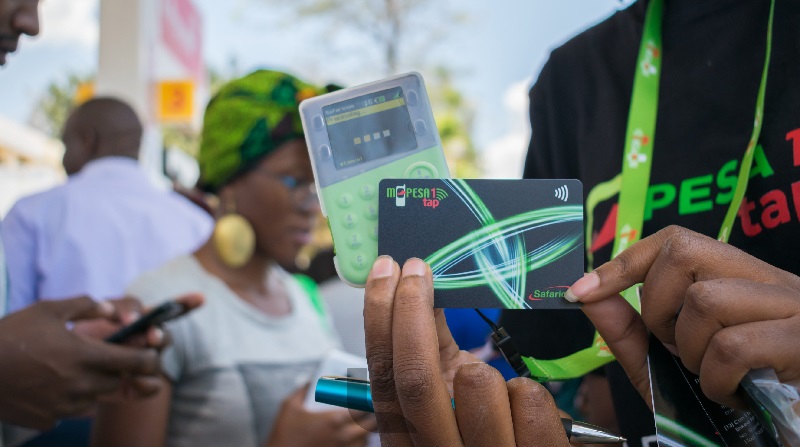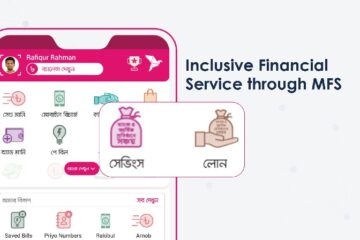M-PESA, launched in 2007 by Safaricom and Vodafone, is one of the most successful mobile financial services (MFS) in the world. It revolutionized financial inclusion in Kenya and other African countries by providing a simple yet powerful platform for mobile money transfers, payments, and banking services. M-PESA’s growth is often cited as a classic case of effective growth hacking—leveraging low-cost, innovative strategies to achieve rapid growth, especially in markets with low banking penetration.
This case study explores the growth hacking strategies that contributed to M-PESA’s success, highlighting key tactics that can be applied to other mobile financial services looking to scale.
1. Identifying the Pain Point: Financial Inclusion
One of M-PESA’s key growth hacking strategies was addressing a real and significant problem in Kenya: the lack of access to formal banking services for millions of people, especially in rural areas. Before M-PESA, large sections of the population had limited access to financial services, making basic transactions like sending money or saving funds highly inefficient.
Strategy
- Focus on the unbanked population: M-PESA targeted a segment of the population that had been largely ignored by traditional banks—the unbanked and underbanked. This allowed the service to tap into a huge market with unmet needs.
- Low barrier to entry: M-PESA made it easy to join the platform with no need for a traditional bank account, ensuring rapid adoption among those without access to banks.
2. Leveraging Existing Infrastructure
A critical factor in M-PESA’s growth was the use of existing telecom infrastructure and the widespread penetration of mobile phones in Kenya. By partnering with Safaricom, M-PESA had access to a vast customer base and could quickly leverage Safaricom’s mobile network to expand its reach.
Strategy
- Telecom partnerships: Instead of building its own infrastructure, M-PESA piggybacked on Safaricom’s extensive mobile network, which already had deep penetration in rural and urban areas.
- Simplicity of service: M-PESA was designed to work on basic mobile phones through SMS and USSD technology, ensuring that even users with the most basic handsets could access the service.
3. Building a Trusted Agent Network
M-PESA’s growth was fueled by its vast network of agents, who acted as intermediaries for users to deposit and withdraw cash. This agent network became a vital bridge between M-PESA’s digital services and the physical economy.
Strategy
- Onboarding agents in key locations: M-PESA rapidly expanded its agent network to both rural and urban areas, ensuring that users could easily deposit or withdraw cash, even in remote locations.
- Trust-building: Agents were typically local shopkeepers or businesses trusted by their communities. This local trust played a key role in overcoming initial skepticism about mobile financial services.
- Incentivizing agents: M-PESA offered commission-based incentives to agents, encouraging them to actively promote the service to their customers.
4. Viral Marketing and Word-of-Mouth Growth
M-PESA relied heavily on word-of-mouth marketing to drive adoption, with early users spreading the word about the service’s convenience and reliability. By addressing real pain points, M-PESA quickly gained a reputation as a trusted platform for sending and receiving money.
Strategy
- Focus on early adopters: M-PESA initially targeted key use cases, such as urban workers sending money to their families in rural areas, where the need for fast, secure transfers was most urgent.
- Natural network effect: As more people signed up and used the service, the network effect took hold—users needed their family members, friends, and business partners to also use M-PESA for the service to be most effective.
- User referrals: Early users became brand ambassadors, encouraging their networks to sign up for the service. This helped M-PESA rapidly scale without heavy marketing expenses.
5. Strategic Partnerships
M-PESA forged strategic partnerships that helped drive adoption and usage across different sectors. These partnerships allowed M-PESA to expand beyond basic money transfers and become a comprehensive mobile financial service platform.
Strategy
- Partnership with banks: M-PESA partnered with banks to offer services like microloans, savings, and insurance to users who previously had no access to formal banking. This extended the service’s appeal and utility.
- Corporate partnerships: M-PESA formed alliances with businesses to allow users to pay bills, buy goods, and access services directly through their mobile phones.
- Government collaboration: M-PESA also partnered with the Kenyan government to handle disbursements of social benefits, further integrating itself into the financial fabric of the country.
6. Iterative Product Development
M-PESA did not stop at mobile money transfers. As the service gained traction, it continued to iterate and expand its offerings to keep users engaged and increase the service’s value.
Strategy
- Expanding services: M-PESA added new services, including bill payments, savings accounts, and microcredit, to create a comprehensive financial ecosystem. This approach made M-PESA indispensable to users beyond simple money transfers.
- Listening to user feedback: M-PESA continuously gathered feedback from users and agents to improve the service, adapt features, and address any pain points.
- Adapting to local needs: By understanding the local market, M-PESA tailored its product offerings to meet the specific needs of Kenyan consumers, which included adding features like micro-savings (M-Shwari) and peer-to-peer loans (KCB-M-PESA).
7. Leveraging Data for Growth
M-PESA effectively used data analytics to track user behavior and identify growth opportunities. The company was able to measure user adoption, transaction volumes, and agent performance, enabling it to optimize the service continuously.
Strategy
- Data-driven insights: M-PESA used transaction data to monitor patterns, detect user pain points, and identify new service opportunities such as microloans or insurance.
- Targeted expansion: Based on user data, M-PESA expanded its agent network to underserved regions or areas with high transaction volumes, ensuring availability where needed.
- Customer segmentation: By understanding different user segments, M-PESA could tailor its marketing and service offerings to meet specific customer needs, helping drive both engagement and retention.
8. Adoption of Regulatory Support
M-PESA’s growth was significantly supported by a favorable regulatory environment. Safaricom worked closely with the Central Bank of Kenya and other regulatory bodies to ensure M-PESA’s operations were compliant with financial regulations.
Strategy
- Collaboration with regulators: From the outset, M-PESA collaborated with regulators to address concerns around money laundering and fraud. This proactive engagement helped establish trust in the platform.
- Financial inclusion goals: By aligning its goals with the government’s financial inclusion agenda, M-PESA secured support from policymakers who recognized its potential to bring millions into the formal financial system.
9. Offline and Digital Marketing
While word-of-mouth was a significant driver, M-PESA also used targeted marketing campaigns to accelerate growth, particularly in regions where mobile adoption was slower.
Strategy
- Grassroots marketing: M-PESA engaged in on-the-ground marketing campaigns, educating potential users and agents in rural areas through in-person demonstrations, radio ads, and SMS notifications.
- Social media and digital campaigns: As digital penetration increased, M-PESA started using social media and digital marketing channels to target younger, tech-savvy audiences.
- Agent training programs: M-PESA regularly trained its agents on how to effectively communicate the benefits of the service, ensuring a consistent message was delivered to new customers.
Impact and Success
M-PESA’s growth hacking strategies resulted in unprecedented success in Kenya and beyond:
- 70% of the adult population in Kenya now uses M-PESA for various financial transactions.
- M-PESA expanded to other countries, including Tanzania, India, Ghana, and Egypt, adapting its model to local contexts.
- The service now handles billions of dollars in transactions, facilitating a wide range of services such as international remittances, government payments, and business transactions.
M-PESA’s success can be attributed to a series of innovative growth hacking strategies that addressed real market needs, leveraged existing infrastructure, and rapidly scaled the user base through partnerships, agent networks, and viral marketing. By focusing on simplicity, accessibility, and continuous iteration, M-PESA transformed the financial landscape in Kenya and beyond, becoming a global model for mobile financial services.
As other mobile financial service providers look to replicate this success, the lessons from M-PESA’s growth hacking strategies—addressing core problems, leveraging partnerships, using data for growth, and ensuring scalability—offer valuable insights into building a robust, user-focused digital ecosystem.










